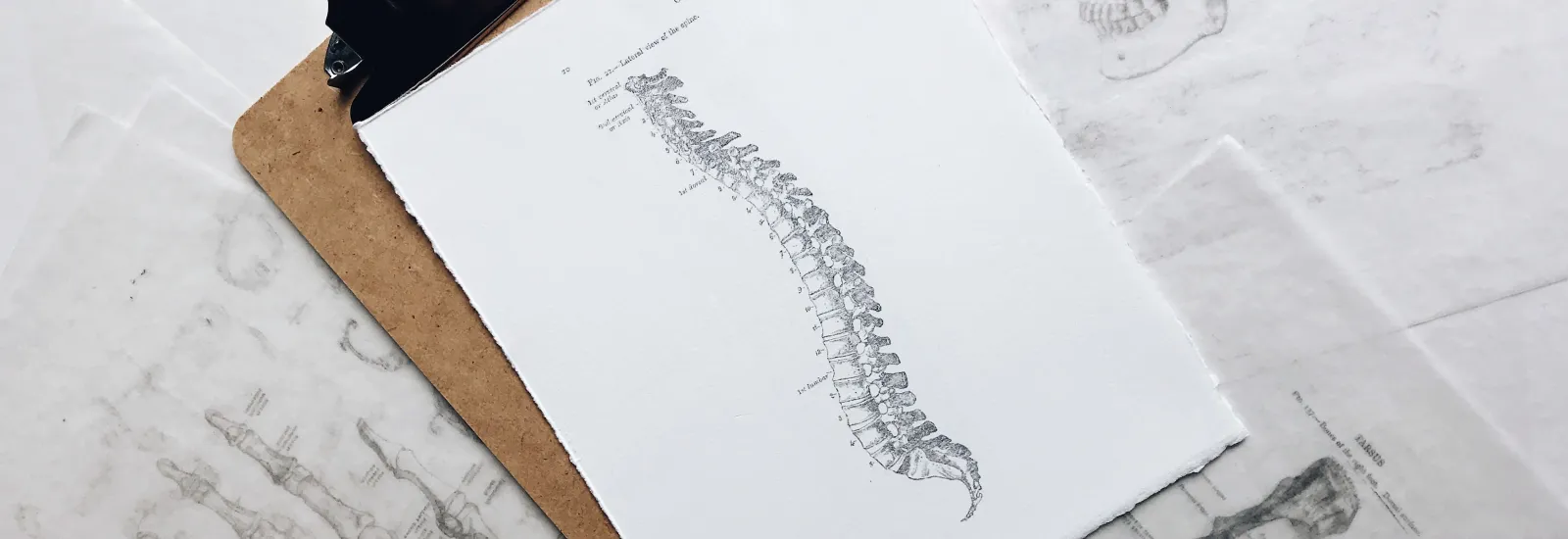
Diagnosing and treating cervical spinal stenosis
4-minute read
Neck pain is a common
complaint, especially as people get older. Still, it isn't a normal part of
aging. Many causes of neck pain can be well managed or treated, including
cervical spinal stenosis. People with this condition experience neck pain and
additional symptoms in their arms and hands that can make daily activities
challenging. If you have cervical spinal stenosis, learning more about it and
starting treatment can help decrease pain, improve your quality of life, and
prevent the condition from worsening.
The parts of the spine
To understand cervical spinal stenosis, you must know a little
about the spine and spinal column. The spine is made up of a stack of small
bones called vertebrae. Vertebrae have holes in the center that line up to make
the spinal canal. The spinal cord and nerves run through this canal from the base of the skull down to
the lower back.
Soft disks between the vertebrae absorb shock, protect the
spinal cord and nerves, and support the vertebrae. Small joints called facet
joints connect the vertebrae and help the spine move.
What is cervical spinal
stenosis?
There are three main parts of the spine. The vertebrae in
the neck are called the cervical spine. Below that is the thoracic spine,
running from the shoulders through the upper back. Next is the lumbar spine,
which is the curve in your lower back.
Stenosis means there's a narrowing of the spinal column.
This narrowing can squeeze or compress the spinal cord and nerves. Stenosis in
the neck is called cervical spinal stenosis. Spinal stenosis can also happen in
the lumbar or thoracic spine. People with spinal stenosis have different
symptoms based on which section of the spinal column is narrow, where the
spinal cord is compressed, and how hard it's squeezed.
Cervical spinal stenosis symptoms
Symptoms of cervical spinal stenosis happen because of
spinal cord compression. Common symptoms include:
- Arm, finger, or hand weakness
- Neck pain
- Numbness or tingling radiating from the arms to the hands
Severe cervical spinal stenosis might also cause bladder or
bowel incontinence or issues with sexual function. Lumbar spinal stenosis
typically causes lower back pain and numbness, tingling, or weakness in the
feet or legs.
Causes and risk factors of
cervical spinal stenosis
Cervical spinal stenosis is most common among older adults.
However, it can also develop in younger people with specific inherited
conditions or who experience a neck injury. People who play contact sports,
such as football or soccer, have a higher risk of developing cervical spinal
stenosis.
Osteoarthritis caused by degeneration is a common cause. A
narrowed spinal canal might also happen because of other age-related changes,
such as:
- Bony growths on the vertebrae called bone spurs
- Hardening or thickening of ligaments, bands of soft tissue that hold vertebrae in place
- Herniated disks, which happen when the pad-like disks between vertebrae bulge, crack, or dry out
- Thickening of the covering around facet joints between vertebrae
Other possible causes of cervical spinal stenosis include:
- A compression fracture
- Achondroplasia, a genetic condition affecting bone formation
- Congenital stenosis, or being born with a narrow spinal canal
- Fracture due to a car accident, fall, or sports injury
- Paget's disease, a long-term condition that causes larger, weaker bone growth
- Rheumatoid arthritis
- Scoliosis, or a spinal curvature
- Spinal tumors
Diagnosing cervical spine
stenosis
To diagnose cervical spinal stenosis, your provider will
start by asking about your medical history and symptoms. They'll also perform a
physical exam, which could include checking:
- Balance
- Gait, or how you walk
- If specific movements or positions make your pain better or worse
- Muscle strength in your arms or legs
- Reflexes
- Sensation
Based on the exam results, they might refer you to an
orthopedic specialist or order imaging
tests, such as a CT scan, an MRI, and X-rays.
In addition to diagnosing cervical spinal stenosis, imaging
tests help your healthcare provider rule out other conditions that might cause
similar symptoms.
Treatment options for cervical
spinal stenosis
There's no cure for cervical spinal stenosis, but treatment
can address symptoms and help you go about your daily life with less pain.
Treatment for cervical spinal stenosis usually starts with a combination of
medication and nonsurgical treatments, such as:
- A home exercise program
- Nonsteroidal anti-inflammatory drugs, over-the-counter or prescription pain medications, or topical creams
- Injections of anti-inflammatory medication
- Occupational therapy
- Physical therapy
- Wearing a brace
Your provider might recommend surgery if nonsurgical
treatments don't help your symptoms or if your symptoms interfere with bladder
or bowel function or walking. Several surgical procedures can be done using minimally invasive techniques, allowing for a
smaller incision, decreased pain, and a faster recovery.
People with spinal stenosis might get some relief with
stretches like bending their head toward their chest. This movement opens the
space between vertebrae, relieving pressure on the spinal cord. Other ways to
decrease symptoms can include:
- Avoiding or quitting smoking
- Maintaining a healthy weight
- Changing your daily routine or how you do tasks that trigger symptoms
- Participating in regular exercise with your provider's approval
When
to talk with your healthcare provider about neck pain
Talk with your provider even if you have only mild neck pain
or occasional numbness or tingling in your arms and hands. Early treatment can
help minimize symptoms and slow the progression of cervical spinal stenosis.
Experiencing neck pain? The experts at Reid Health Comprehensive Bone & Joint Center can help.

